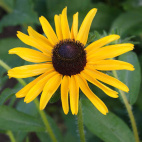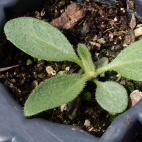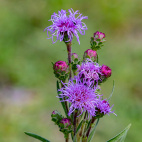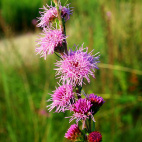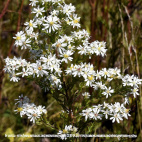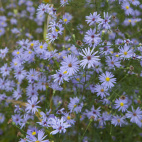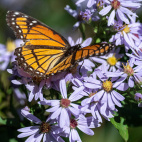Color
Availability
USDA Zone
Region
Type
Duration
Season
Germination
Soil
Sunlight
Height
Use
Narrow Your Search
Color
Availability
USDA Zone
Region
Type
Duration
Season
Germination
Soil
Sunlight
Height
Use
Wildflower Seeds - Northern Region
The Northern region is home to our Canadian friends in the eastern provinces, as well as the northern-most part of the Eastern US. This area is characterized by a long, cold winter with lots of snow, and a short humid summer that only lasts about 3 or 4 months. Most of the area is classified as a UDSA Growing Zone 4 or less, and the species that grow here have interesting ways to perpetuate themselves in spite of the short growing season. There are a lot of forests and wetlands in this region, so adequate moisture is hardly ever a problem. Look up your growing zone to make sure that the Northern wildflower seeds that you want to grow are winter hardy. Alternatively, just order annual flower seeds online so that the plant does not need to make it through the winter, but can reseed itself and come back from seed the next year.
-
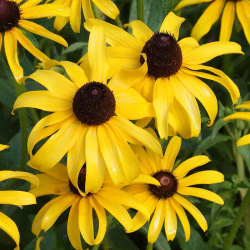 Black Eyed Susan Seeds
Rudbeckia hirta
Black-eyed Susan is probably the most popular wildflower for summer gardens. This biennial is so easy to grow, and produces a lot of showy yellow blooms that are liked by butterflies - so why not have it in the garden?Quick View$2.98 Pkt - $7.09 / Oz
Black Eyed Susan Seeds
Rudbeckia hirta
Black-eyed Susan is probably the most popular wildflower for summer gardens. This biennial is so easy to grow, and produces a lot of showy yellow blooms that are liked by butterflies - so why not have it in the garden?Quick View$2.98 Pkt - $7.09 / Oz -
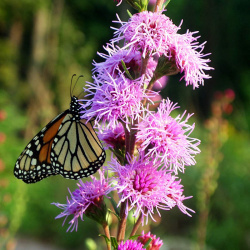 On Sale!
Button Blazing Star Seeds
Liatris aspera
This striking native takes a few years to grow from seed but is very attractive to butterflies, bees, and hummingbirds. Rows of feathery, pink blossoms line the tall stems of this eye-catcher. It is successfully used as a summer bloomer in native prairie plantings.Quick Viewx
On Sale!
Button Blazing Star Seeds
Liatris aspera
This striking native takes a few years to grow from seed but is very attractive to butterflies, bees, and hummingbirds. Rows of feathery, pink blossoms line the tall stems of this eye-catcher. It is successfully used as a summer bloomer in native prairie plantings.Quick ViewxButton Blazing Star Seeds
Liatris aspera
This striking native takes a few years to grow from seed but is very attractive to butterflies, bees, and hummingbirds. Rows of feathery, pink blossoms line the tall stems of this eye-catcher. It is successfully used as a summer bloomer in native prairie plantings.
$3.75 Pkt - $48.00 / Oz -
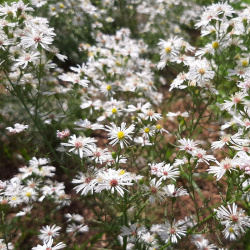 Heath Aster Seeds
Aster ericoides
Named for their resemblance to the white heath of the moors of England, these Asters thrive in dry, rocky prairies or pastures. Since it spreads easily, it will eventually form extended colonies of attractive white bushes.Quick View$3.75 Pkt - $100.00 / Oz
Heath Aster Seeds
Aster ericoides
Named for their resemblance to the white heath of the moors of England, these Asters thrive in dry, rocky prairies or pastures. Since it spreads easily, it will eventually form extended colonies of attractive white bushes.Quick View$3.75 Pkt - $100.00 / Oz -
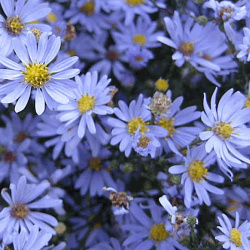 Out Of Stock
Rice Button Aster Seeds
Aster dumosus
These cheery, little flowers are as bright as a button. This notably adaptable species can be found growing wild in areas as diverse as sandy soil, open woods, bogs, or along roadsides.Quick Viewx
Out Of Stock
Rice Button Aster Seeds
Aster dumosus
These cheery, little flowers are as bright as a button. This notably adaptable species can be found growing wild in areas as diverse as sandy soil, open woods, bogs, or along roadsides.Quick ViewxRice Button Aster Seeds
Aster dumosus
These cheery, little flowers are as bright as a button. This notably adaptable species can be found growing wild in areas as diverse as sandy soil, open woods, bogs, or along roadsides.
$3.96 Pkt - $136.00 / Oz -
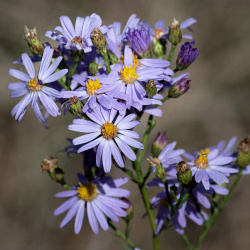 On Sale!
Sky Blue Aster Seeds
Aster azureus
These dainty, azure blue flowers will blanket a fall meadow in stunning beauty. A great source of pollen and nectar in the late fall. Also perfect for a vase or dried flower arrangement.Quick View$3.75 Pkt - $32.00 / Oz
On Sale!
Sky Blue Aster Seeds
Aster azureus
These dainty, azure blue flowers will blanket a fall meadow in stunning beauty. A great source of pollen and nectar in the late fall. Also perfect for a vase or dried flower arrangement.Quick View$3.75 Pkt - $32.00 / Oz
The Northern region is home to our Canadian friends in the eastern provinces, as well as the northern-most part of the Eastern US. This area is characterized by a long, cold winter with lots of snow, and a short humid summer that only lasts about 3 or 4 months. Most of the area is classified as a UDSA Growing Zone 4 or less, and the species that grow here have interesting ways to perpetuate themselves in spite of the short growing season. There are a lot of forests and wetlands in this region, so adequate moisture is hardly ever a problem. Look up your growing zone to make sure that the Northern wildflower seeds that you want to grow are winter hardy. Alternatively, just order annual flower seeds online so that the plant does not need to make it through the winter, but can reseed itself and come back from seed the next year.






